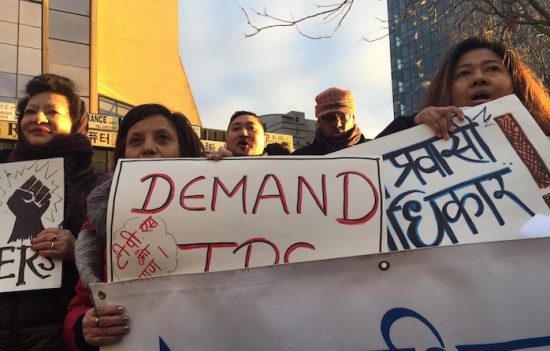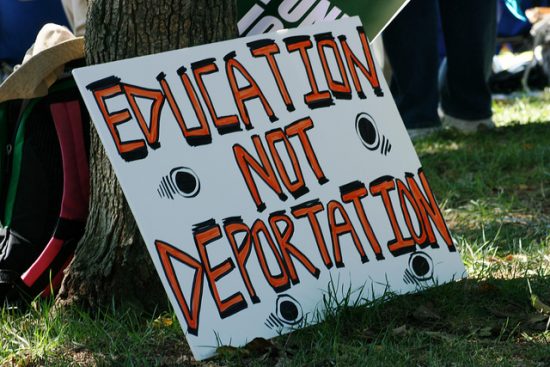The shutdown countdown may be over, but it has bombarded us with some Trump buzzwords.
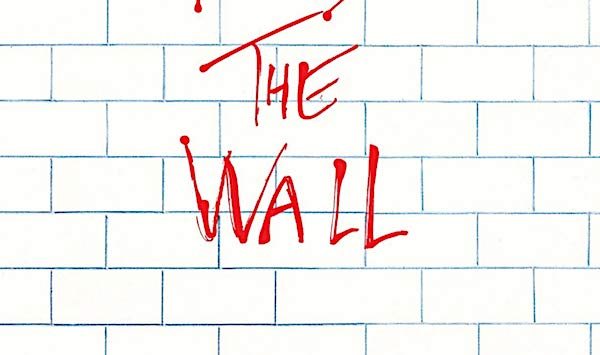
January 29, 2019
Donald Trump, the 45th (some say 44th) President of the United States, has been hogging the headlines since before the year ended. From December 22 last year until Friday last week, the U.S. federal government were on a partial shutdown, due to Trump’s insistence to include a $5.7-billion funding to build his border wall into the U.S. government’s short-term spending bill.
When the Democrats both in the House of Representatives and the Senate refused to give Trump what he wants, he put out what he said was a “compromise proposal” that he touted will end the shutdown. His proposal included a three-year extension of the Deferred Action for Childhood Arrivals or DACA, and the Temporary Protected Status or TPS.
The shutdown was shelved, at least for three weeks, when Trump and Congress agreed to reopen the federal government, albeit without the money for Trump’s beloved wall.
To put in context these buzz words generated by Trump’s shutdown, Open City has dug up a shortlist of stories that deal with the more popular, or better yet, more infamous words, of the past 30-plus days. For the shutdown countdown, here’s our take on the wall, the border, DACA and TPS.
The Wall
 Why is Donald Trump so fixated about the wall?
Why is Donald Trump so fixated about the wall?
As early as 2015, Trump told Fox News about his fascination with China’s Great Wall. “You know the Great Wall of China? Built a long time ago, it is 13,000 miles. I mean, you’re talking about big stuff. We’re talking about peanuts, by comparison, to that,” Trump said, as narrated by then Open City Fellows Rong Xiaoqing in her story, “Wall to Wall.”
For Trump, the wall on the Mexican border is the answer that will bring down criminality in the U.S., solve the drug problem and stop illegal immigration. All these reasons cited by Trump have been proven either inaccurate or downright false .
But perhaps Trump’s worse fear-mongering to justify his wall is his oft-repeated made-up claim that the wall is the only thing that stands against “an invasion” of migrants at the southern border. Trump, however, left out a significant part of his “wall as a defense” story – that not even a wall as great as the Great Wall could protect China from invaders.
Rong wrote:
“But what may be the most noteworthy resemblance between the two walls is that the Great Wall didn’t really serve its original mission and Trump’s wall is destined to fail its mission too.
“The Great Wall was initially built to protect China from the invasion of the northern nomads. Still, despite the Great Wall, China was overrun by none other than the very northern nomads that it wanted to fence out. The Ming Dynasty, during which the Great Wall spanned over 15 provinces stretching from Liaoning in the east to Gansu in the west, was overthrown by the Manchus who broke through the Great Wall in the summer of 1644 and ruled China for the next 268 years.”
Read Open City Fellow Rong Xiaoqing’s Wall to Wall.
☐ ☐ ☐ ☐ ☐
Border Security
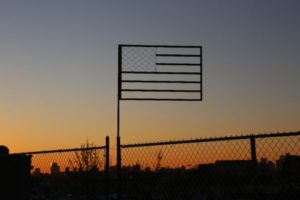 This brings us back to Donald Trump’s claim of invasion at the southern border with Mexico.
This brings us back to Donald Trump’s claim of invasion at the southern border with Mexico.
He first brought up the idea of “invasion” in reference to the caravan of Central American migrants who were headed to the U.S. Mexico border in late October. He even sent more than 5,600 active duty combatants to the border to try to stop what Trump calls an invasion.
Although about 6,000 migrants arrived in Tijuana in mid-November, the anticipated swarming to cross the border did not happen. Instead, they rested and got in line to request asylum.
Trump’s characterization of what’s happening at the southern border is so far removed from reality. Our Open City Fellow Roja Heydarpour has a better grasp of the real goings-on on the ground.
Roja wrote:
“In Juarez, we woke up before dawn and headed over to the consulate each day to dutifully take our place on endless lines that snaked with other anxious immigrants. Families from all over the world stood in that blue light just before sunrise, clutching their documents. Some had briefcases, others had brown accordion folders, the ones with the elastic fastener. Everyone had documents. They are the end-all, be-all for immigrants. They are your everything. They are all you have. They are your past, your present and your future. (While one of the signs of my empowerment as a citizen is to play a little fast and loose with documents, I still have a folder. It’s much smaller now, but it’s still a brown, leather-bound container for my precious documents.)
“At night, we would eat out, terrified of diarrhea. You cannot stand in those lines with a churning, already-vulnerable stomach. We had to leave many an appealing salad untouched. After dinner, we craned our necks to watch Jeopardy! on the television suspended from the motel room ceiling. One of the parents from our day-care was on the show. We watched a client win $10,000 at night, and stood among the huddled masses in the day. That was our life as ‘illegal aliens.’”
Read Open City Fellow Roja Heydarpour’s Undocumented in the 80s
☐ ☐ ☐ ☐ ☐
DACA
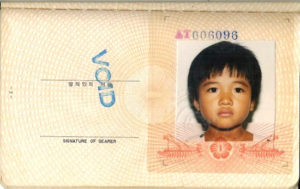 To lure the Democrats to accept his wall funding, Trump dangled a promise to extend DACA by three more years. DACA is a program signed by former President Barack Obama that allows young migrants of a certain age to live, work and study in the U.S. for three years without fear of deportation.
To lure the Democrats to accept his wall funding, Trump dangled a promise to extend DACA by three more years. DACA is a program signed by former President Barack Obama that allows young migrants of a certain age to live, work and study in the U.S. for three years without fear of deportation.
The Trump administration has been throwing everything in its arsenal to end the program. The case is now in the Supreme Court and Trump was hoping the high court will decide soon in his favor. As a result, he was planning to use that to force the Democrats to agree to a deal with him.
But on January 22, the justices took no action on the DACA case, thereby allowing the program to continue. The non-action rendered Trump’s DACA carrot stale.
Open City Fellow Thanu Yakupitiyage tracked down an undocumented youth who gave us a glimpse of how it is to live in the shadow.
Thanu wrote:
“Jong-Min found out he was undocumented in 1997, during his third year at Stuyvesant High School, a prestigious New York City school. He had applied to an internship at a hospital because he was interested in becoming a pediatrician. To get the internship at the hospital, he had to provide documentation, including his permanent residency card.
“When he called his mother to ask where his green card was, she hesitated and just said it was at home. When he went home to search for it but couldn’t find it, he went back to his mother to ask where it was. She finally told him that he didn’t have one and that they did not have legal documentation…
“Jong-Min came out as undocumented in 2009. I asked him why he finally decided to come out of the shadows. He said it was a combination of things – he saw more and more undocumented people become vocal about their immigration statuses, and he had also joined several Facebook groups on immigration and saw people posting about the DREAM Act and immigration reform. He’d also heard of several cases of young undocumented people taking their lives because they were so depressed at their lack of prospects in the U.S. ‘Kids were committing suicide… I couldn’t just sit around and watch.’”
Read Open City Fellow Thanu Yakupitiyage’s The Right to Stay.
☐ ☐ ☐ ☐ ☐
TPS
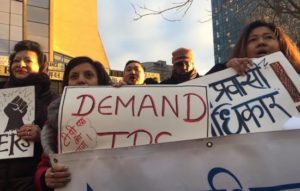 Another of Trump’s proposal involved the Temporary Protected Status. The TPS is a discretionary program that allows individuals from countries struck by natural disasters or mired in armed conflicts to stay and work in the U.S.
Another of Trump’s proposal involved the Temporary Protected Status. The TPS is a discretionary program that allows individuals from countries struck by natural disasters or mired in armed conflicts to stay and work in the U.S.
In his proposal that was contained in a bill introduced in the Senate, Trump offered a three-year extension of TPS. But the bill only included TPS holders from four countries – Honduras, Nicaragua, El Salvador and Haiti.
Sudan’s TPS ended in November last year, and Nepal’s TPS, which will end in June this year, was excluded from the bill.
Trump’s bill, however, imposes more stringent requirements and doubled the application fee for the status. Moreover, the proposed Senate bill will require TPS holders to “maintain an income of at least 125 percent of the poverty level.”
Open City Fellow Pearl Bhatnagar spent time with Nepalis who were campaigning last year to have their TPS extended.
Pearl wrote:
“Fears like Shivani’s are stoked in Queens and in communities across the country where some 9,000 Nepalis may possess Temporary Protected Status as their only form of documentation. The Department of Homeland Security will decide by April 25 whether to renew or revoke TPS for Nepali nationals. Launched in 1990, the TPS program offers relief to migrants whose countries cannot absorb them due to environmental disaster or armed conflict.
“The majority of Nepali TPS holders toil in the most unprotected, underpaid and undervalued industries today – as domestic workers, nail salons technicians and restaurant workers…
“‘When I received TPS, it was like a weapon that I could use to fight for myself and my family,’ says Ramita, who works as a nanny. ‘TPS has been like a safety blanket, a reassurance that I have the right to stay in the U.S., to work, to live here, to support this country as well as to support back in Nepal.’
“With the possibility that TPS for Nepalis will not be renewed on April 25, all this may soon be gone.
“’evoking TPS will set off another earthquake, this time in people’s minds,’” according to Pabitra Dash, a nail salon organizer at Adhikaar.”
Read Open City Fellow Pearl Bhatnagar’s Nepalis Fight for TPS

